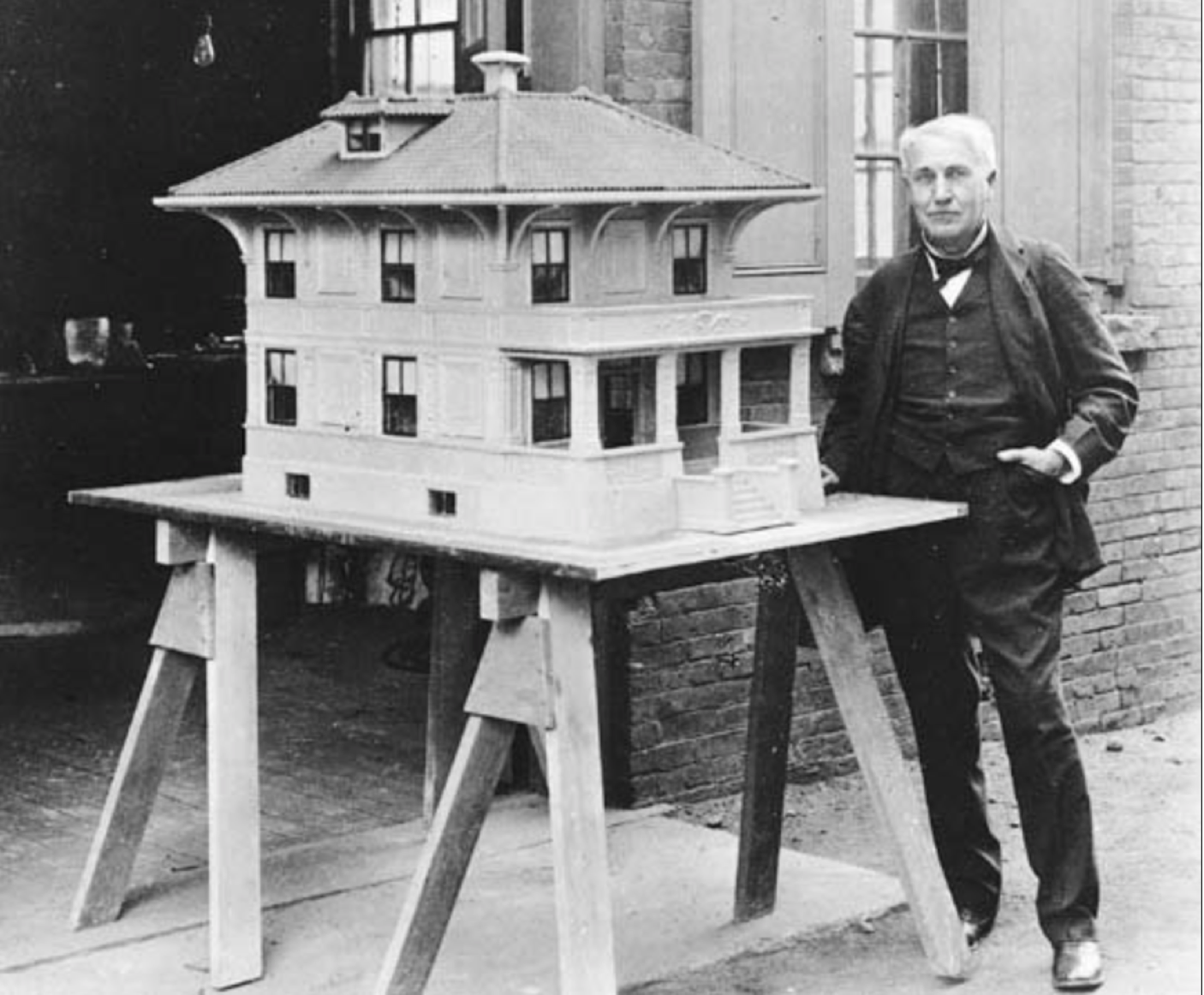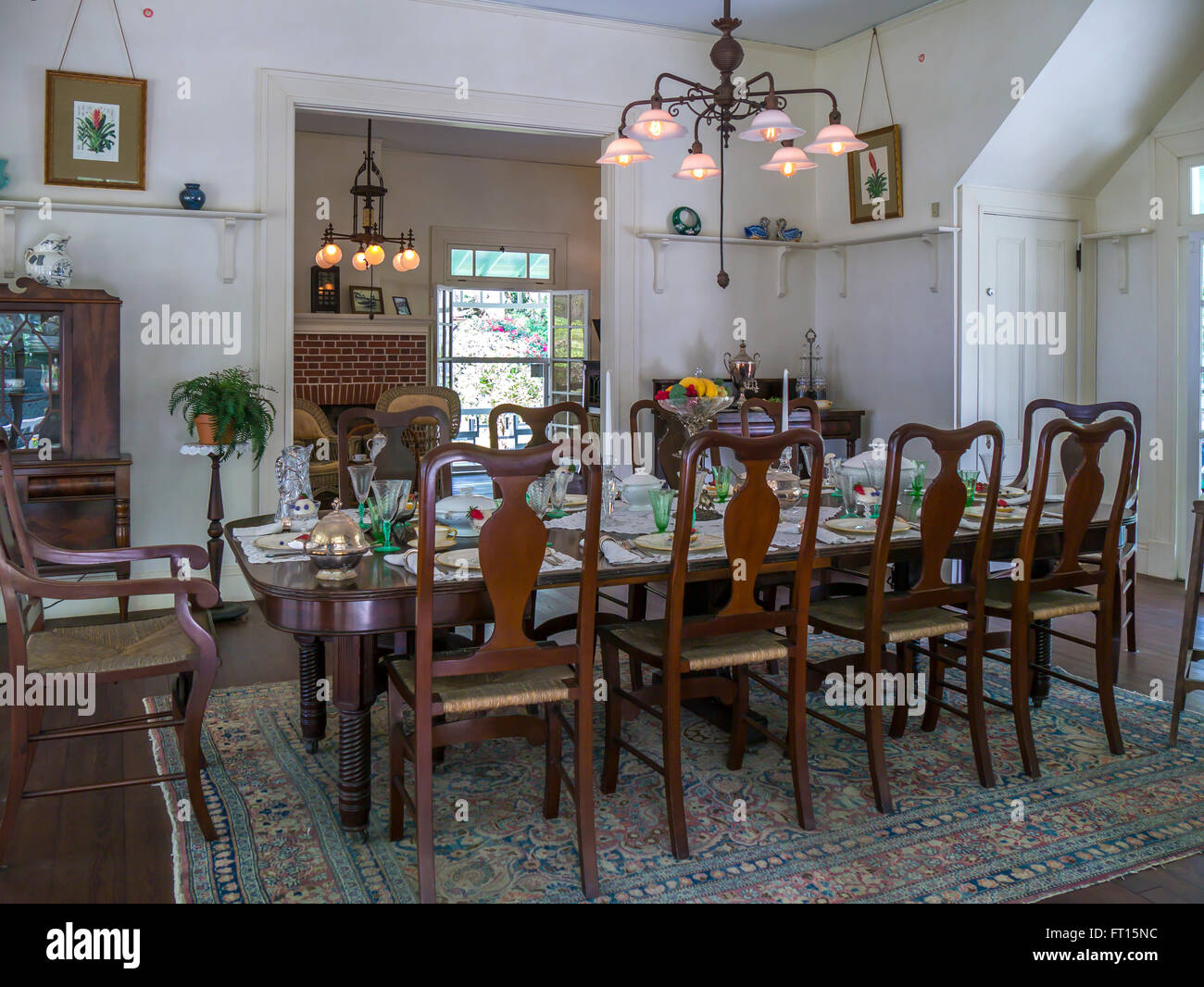Table Of Content
- Southern California Edison power lines sparked deadly Thomas fire, investigators find
- Column: We’re wiping out the Southern California steelhead trout. Time to fix that
- Thomas Edison National Historical Park / Edison House, Llewellyn Park
- See Thomas Edison’s mansion home, inside & out
- After scandal, movie producer Randall Emmett is flying under the radar with a new name

Without his cutthroat, and eventually illegal, business practices, there is a good chance that West Orange, New Jersey would still be home to the film industry and that Hollywood would just be another town outside of Los Angeles. Oh, and there was one other reason the movie industry made its way west. Los Angeles was far away from New Jersey—and Thomas Edison was in New Jersey. The National Park Service maintains a 1954 reproduction of the original Black Maria where visitors can imagine what it was like to step on the first film stage, before the world had any inkling of what it would someday mean to be a movie star. As we gear up for the summer blockbuster season, some movie lovers might be surprised to learn that a reproduction of the world’s first film studio is part of the U.S. In 1913, in hopes of ending MPPC’s crushing monopoly, William Fox of Fox Film Corporation, along with the owners of Paramount and Universal, brought a complaint to the U.S.
Southern California Edison power lines sparked deadly Thomas fire, investigators find
Modern day businessmen still commute to New York, but the old train line is gone. More than any other individual, he was credited with building the framework for modern technology and society in the age of electricity. His Glenmont estate—where he died in 1931—and West Orange laboratory are now open to the public as the Thomas Edison National Historical Park.
Column: We’re wiping out the Southern California steelhead trout. Time to fix that
North Jersey home from 1859 listed for $1M, had prominent owners - NorthJersey.com
North Jersey home from 1859 listed for $1M, had prominent owners.
Posted: Wed, 13 Dec 2023 08:00:00 GMT [source]
Mrs. Edison managed all the house’s staff and hosted numerous visiting dignitaries at Glenmont. One of the oldest buildings in Fort Myers was on the site when Edison purchased the property from cattle baron Samuel Summerlin in 1885. The original “cracker” style house was used by cattlemen as they drove their herds South. Edison expanded the house, adding a kitchen, garage, and chauffeur’s quarters. Edison’s caretakers lived on the property all year long while maintaining the estate. Originally the Guest House was owned by a business partner of Thomas Edison.
Thomas Edison National Historical Park / Edison House, Llewellyn Park

His laundry list of inventions includes the light bulb, the phonograph, the alkaline storage battery, and the kinetograph — the first ever movie camera. The Intermountain Power Agency, located in Utah, is a power generating cooperative of 23 municipalities in Utah and 6 in California. It owns the Intermountain Power Project near Delta, Utah, one of the largest coal-fired power plants in the United States. About 75 percent of the generated power is purchased by cities in Southern California and the remainder is purchased by cities, cooperatives and Pacificorp in Utah and a cooperative in Nevada. The IPA also runs transmission lines to Mona, Utah, to Adelanto Converter Station in Adelanto, California and near Ely, Nevada. The power plant consists of two units each with a generation capacity of 950 MW.
Homeless encampments are on the ballot in Arizona. Could California, other states follow?
Sixteen high-voltage transmission lines connect Hoover Dam with its power market area. A third line extends to Los Angeles via the McCullough Switching Station, where the energy is stepped up to 500,000 volts. Other lines extend to Kingman, Arizona; Needles, California and nearby Boulder City. In 1876 Edison sold all his Newark manufacturing concerns and moved his family and staff of assistants to the small village of Menlo Park, twenty-five miles southwest of New York City. Edison established a new facility containing all the equipment necessary to work on any invention. This research and development laboratory was the first of its kind anywhere; the model for later, modern facilities such as Bell Laboratories, this is sometimes considered to be Edison's greatest invention.
See Thomas Edison’s mansion home, inside & out
Columbia Market House to restore historic dungeons [video] - LNP LancasterOnline
Columbia Market House to restore historic dungeons .
Posted: Thu, 07 Mar 2024 08:00:00 GMT [source]
The first machine that could record and reproduce sound created a sensation and brought Edison international fame. Edison toured the country with the tin foil phonograph, and was invited to the White House to demonstrate it to President Rutherford B. Hayes in April 1878. Thomas Alva Edison was born on February 11, 1847 in Milan, Ohio; the seventh and last child of Samuel and Nancy Edison. Edison lived here until he struck out on his own at the age of sixteen.
After scandal, movie producer Randall Emmett is flying under the radar with a new name

Spurred on by others’ work on improving the phonograph, he began working toward producing a commercial model. He also had the idea of linking the phonograph to a zoetrope, a device that strung together a series of photographs in such a way that the images appeared to be moving. Working with William K.L. Dickson, Edison succeeded in constructing a working motion picture camera, the Kinetograph, and a viewing instrument, the Kinetoscope, which he patented in 1891.
History
A magnificent semicircular conservatory graces the south side of the home. The construction of Glenmont includes over 157,000 bricks, and in excess of 10,000 pounds of iron and steel framing. A total of 94 exterior windows grace the building, 41 of them adorned with canvas awnings. Over the years, the Edison’s added 6 more bathrooms, mostly on the second floor, for a total room count of 29 and ½ . Thomas Edison received little formal education, and left school in 1859 to begin working on the railroad between Detroit and Port Huron, Michigan, where his family then lived.
Industry Products
Thomas Edison National Historical Park preserves Thomas Edison's laboratory and residence, Glenmont, in West Orange, New Jersey, United States. These were designed, in 1887, by architect Henry Hudson Holly.[3] The Edison laboratories operated for more than 40 years. Today, the Big Creek project generates nearly 4 billion kilowatt hours (KWh) per year – about 90 percent of SCE's total hydroelectric power, or about 20 percent of SCE's total generating capacity. Big Creek accounts for 12 percent of all the hydroelectric power produced in California.[5] The Big Creek reservoirs also provide irrigation and flood control benefits for the Central Valley, and are popular recreation areas. However, the project has had various environmental and social impacts, including the disruption of fish and animal migration, and the flooding of historical sites and traditional Native American lands.
The two-story riverfront home was built in the Craftsman architectural style. Built in 1910, the 50′ x 20′ swimming pool is believed to have been constructed using Edison Portland Cement and was one of the first residential pools. In a 1928 remodel, the Pool House with changing rooms and a shower, and Tea House were added.
Edison’s mother died in 1871, and that same year he married 16-year-old Mary Stillwell. The estate was given to the federal government by the McGraw-Edison Company in 1959. The company and Edison’s children also donated the estate’s furnishings. GreatSchools is the leading nonprofit providing high-quality information that supports parents pursuing a great education for their child, schools striving for excellence, and communities working to diminish inequities in education. This indicates if this school has a part-time, full-time or no sworn law officer on campus. The percentage of full-time teachers at this school who have met all applicable state standard teacher certification requirements.
It was known as the Motion Picture Patents Company (MPPC) or, more colloquially, the Edison Trust. The Trust included competing production company that Dickson founded, Biograph, which held its own camera patent; as well as Eastman Kodak, the biggest producer of raw film. Given how many patents the cartel covered, it was virtually impossible for any independent movie studio to make a film without being bombarded by copyright infringement lawsuits from the MPPS. Two hundred eighty-nine legal complaints were directed at Universal Studios alone.
The electric light bulb wasn't Edison's favorite invention, but certainly his most famous. Our light bulb collection consists of many varied types of early light bulbs and you will notice many of them have pointed tip ends. The Edison estate resides in beautiful and historic Llewellyn Park, originally envisioned by Llewellyn Haskell in 1850 as a bucolic hillside refuge from the already teaming and exploding city populations of New York and Newark, NJ.
The courts, particularly in the Eastern United States, only seemed too happy to enforce their monopoly. Edison next undertook his greatest challenge, the development of a practical incandescent, electric light. The idea of electric lighting was not new, and a number of people had worked on, and even developed forms of electric lighting.
In time however, he would grow into a more robust and highly motivated young man, essentially on his own by his early teenage years. This self-reliance would be his hallmark for the rest of his life, driving him relentlessly to solve problems. As he was fond of saying, “All good things come to those who hustle while they wait”. The Pedders originally commissioned architect Henry Hudson Holly to build Glenmont. Henry Pedder was a confidential secretary for the prestigious Arnold Constable Company in New York. Unknown to the company however, was Pedder’s stealing of corporate funds to finance the construction and furnishing of lovely Glenmont.
When Harvey and Daeida Wilcox purchased 120 acres of farmland northwest of Los Angeles in 1886, they had plans to live a quiet life on their ranch that they called Hollywood. The prohibitionist couple’s dream of a fig farm faltered just one year after their purchase, and as a result they turned to an industry that had never failed them before — real estate. The Wilcoxes divided up their land and sold it off quickly to like-minded buyers, envisioning a sober and deeply religious community.
No comments:
Post a Comment